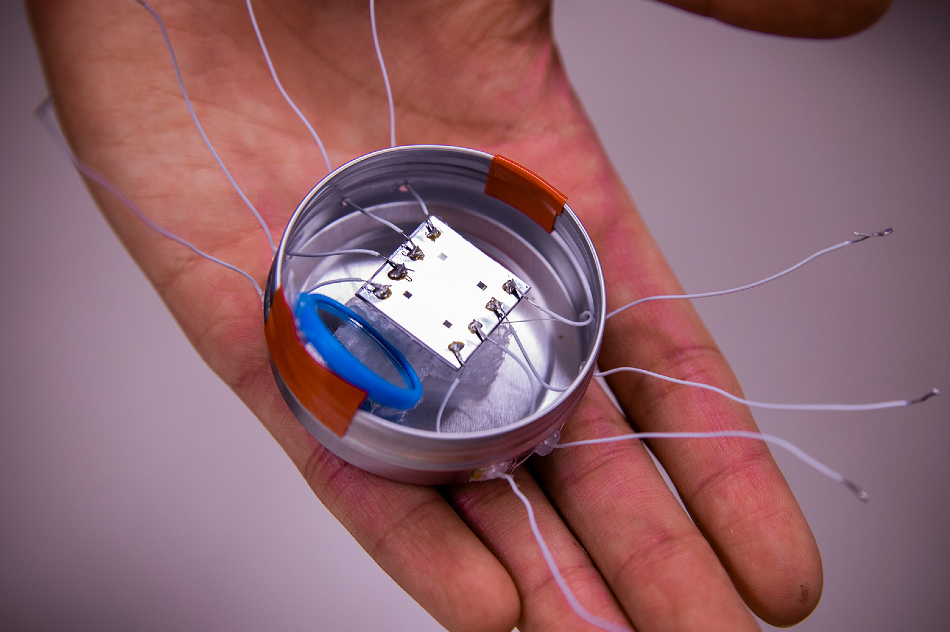Jul 31 2020
The principles of origami—Japanese art of folding—could help unleash the power of the smallest robots, thereby improving agility, speed, and control in machines measuring just about a centimeter.
 A new generation of micro-robotics inside Evgueni Filipov’s lab at the G.G. Brown Building on North Campus, Ann Arbor, Michigan on June 17th, 2020. Image Credit: Robert Coelius/Michigan Engineering.
A new generation of micro-robotics inside Evgueni Filipov’s lab at the G.G. Brown Building on North Campus, Ann Arbor, Michigan on June 17th, 2020. Image Credit: Robert Coelius/Michigan Engineering.
Scientists at the University of Michigan (U-M) have illustrated that behavioral rules based on this art could improve the abilities of such machines, paving the way for more and more use in fields as diverse as infrastructure sensing and medical equipment.
We’ve come up with a new way to design, fabricate and actuate microbots. We’ve been the first to bring advanced origami folding capabilities into one integrated microbot system.
Evgueni Filipov, Assistant Professor, Civil and Environmental Engineering, University of Michigan
The researchers’ bots have the ability to form one shape, fulfill a task, and then reconfigure again into another shape for a different task, and so on.
The group’s new research includes Kenn Oldham, a U-M professor of mechanical engineering, Ph.D. student Yi Zhu, and graduate research assistant Mayur Birla. The study was published in the Advanced Functional Materials journal.
A majority of the microbots developed until now have restricted movements, which impedes their potential to carry out beneficial tasks. They should be able to fold at wider angles to achieve an improved range of motion.
The research team from U-M has designed microbots that can fold up to 90° and more. Larger folds enable the microbots to form shapes that are more intricate.
The exclusive method developed by the U-M researchers allows their microbots to fulfill their range of motion up to 80 times per second—a higher speed compared to most of the robots could achieve.
Microbots based on origami principles usually need an exterior stimulus to activate, like the heat inside a body, or a magnetic field applied to the microbot. The U-M microbots use a layer of polymer and layer of gold that serves as an onboard actuator, thereby avoiding the need for an outside stimulus.
Currently, the microbots are manipulated through a tether, but ultimately, a microcontroller and an onboard battery will supply electric current to the systems.
When current passes through the gold layer, it creates heat, and we use heat to control the motions of the microbot. We drive the initial fold by heating the system, then we unfold by letting it cool down. To get something to fold and stay folded, we overheat the system. When we overheat, we can program the fold—change where it comes to rest.
Evgueni Filipov, Assistant Professor, Civil and Environmental Engineering, University of Michigan
Such abilities enable microbots to operate plastically as well as elastically, providing them the potential to return to their original shape.
The study was financially supported by the Defense Advanced Research Projects Agency (DARPA), and the College of Engineering Dean’s Fellowship from the University of Michigan.
Journal Reference:
Zhu, Y., et al. (2020) Elastically and Plastically Foldable Electrothermal Micro-Origami for Controllable and Rapid Shape Morphing. Advanced Functional Materials. doi.org/10.1002/adfm.202003741.
Flexible, adaptable micro-robots inspired by origami
Video Credit: Michigan Engineering.